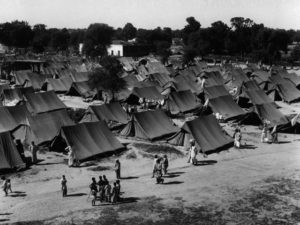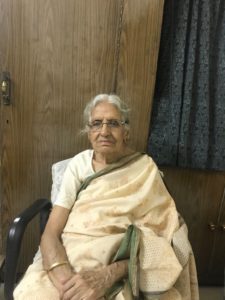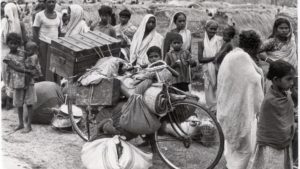Pakistan refugees in India: Partition stories that never faded
While both India and Pakistan have come a long way since 1947 as two separate countries, the memories of the horrific partition is still afresh among the people who were displaced from their homelands.

T
oday, fields are lined with corpses, and blood fills the Chenab
Someone has mixed poison in the five rivers’ flow
Their deadly water is, now, irrigating our lands galore
This fertile land is sprouting, venom from every pore
The sky is turning red from endless cries of gore
The toxic forest wind, screams from inside its wake
Turning each flute’s bamboo-shoot, into a deadly snake …
Translation of an extract from a Punjabi poem “Aaj Akhan Waris Shah Nu” by Amrita Pritam
According to United Nations Human Commission for Refugees (UNHCR), there is record of 68.5 million people being displaced worldwide by 2017. Nearly 20 people are forcibly displaced every minute as a result of conflict or persecution. If we take a look at India`s history, it can be observed that India has faced some of the largest and complex refugee situations in recent human history: partition had led to the mass movement of 14 million people, while in the early 1970s, India received nearly 10 million Bengali refugees from East Pakistan.
The year 1947 was a pivotal landmark in Indian history. The year faced unparalleled violence and displacement of people. Thousands of lives were uprooted and people were forced to start their lives from scratch. People were emotionally and physically scarred. There were uncountable instances of rape, massacre, loot, which led many writers, poets and survivors to call this partition as ‘a division of hearts’.
The Indian government’s decision was to give people the freedom to choose which nation they wished to be a part of and welcomed people of all religions. In such a situation many Hindus as well as Muslims migrated to India. One such refugee was Santosh. Little Santosh was only 10 when she was forced hurriedly to pack her belongings and leave her childhood home. She knew this day would come as the rumors of partition were floating around for the sometime. They crammed as much jewelry as they could in their undergarments and hid the rest in an earthen pot and buried it in a secret place, with the belief that they would come back and retrieve it.
“There was a blackout and it was impossible to get a train. With great difficulty we finally managed to board the train to Ludhiana. The trains were heavily overloaded. We used to make tea using the hot water from the engines.” – Santosh

Unfortunately, some of Santosh’s family members had to stay back, including her father and two brothers. Information about their whereabouts were unknown. Santosh with her relatives visited the railway station everyday for 3-4 months in hope of seeing her father and brothers alive. In Ludhiana they were given shelter by a family friend. They used to eat at ‘Langars’ which were organized by Hindus. According to Santosh, the local Hindus were very welcoming and supportive. She said, “When we first came to India, we were completely lost and confused as to how we would survive. Gradually our father began conducting export import business of cloth and hence we shifted to Delhi.”
Santosh joined a community school in Delhi and resumed her education. She also learnt other useful skills such as knitting and sewing. They were provided an accommodation by the custodian in Haveli Narwhale in Daryaganj. She exclaimed as she told, “Later we found out that the house given to us was also the birthplace of Pervez Musharraf. We were quite surprised.” They were also given a shop in Daryaganj through claim. Eventually business became stable and in the words of Santosh ‘Gaadi dheere patri pe aa gayi’.
Almost two decades after the formation of East Pakistan and West Pakistan, tension arose between the two. The mass movement by East Pakistan against the dominance of West Pakistan was brutally crushed by the army of West Pakistan. There were widespread killings, rapes, burning of villages, loots etc. Millions of East Pakistanis fled to India to escape tyranny. Manoj Singh recounts his experience of fleeing persecution and seeking refuge in India. He was only 15 when he witnessed his parents being brutally butchered by the army.
“ I didn`t even have time to mourn my parents death as I had to immediately gather whatever I could and evacuate the house with my siblings and maternal uncle.”– Manoj Singh

Manoj and his remaining family reached India by a train and took shelter in the refugee camps in West Bengal. Despite the Indian government’s best efforts, life in refugee camps was difficult. The camps were unhygienic. There was scarcity of food and water, and people fell ill. Nearly 600,000 people died by July in those camps. The refugee camps were highly overcrowded as is recorded in the letter from Indian Prime Minister Gandhi to President Nixon which says “Until the 12th May 1971, the number of fugitives who were registered on their crossing the border into India was 2,328,507. We believe that there is a fair number who have avoided registration. Refugees still continue to pour in at the rate of about 50,000 a day.”
Manoj and his family stayed in the camps for a year and rehabilitated in Delhi. Gradually life returned to normalcy. Today Manoj has a family of his own. He works as a salesman at a footwear shop. He hopes for a bright future for his children and wishes to suppress the traumatic memories of the past.
Almost seven decades after partition, a number of Hindus still migrate from Pakistan every year, seeking asylum and citizenship in India. According to a community organization, more than 1 lakh Pakistani Hindus are presently living in India, having fled persecution in the form of attacks on persons and property, kidnappings, forced conversions and marriages. They also migrate in search for better livelihoods and opportunities, as they are discriminated against in their own country.
The UN chief Antonio Guterres recently described India as a ‘very important inspiration’ and thanked India for its ‘strong commitment to multilateralism’. The UNHCR Commissioner Fillipo Grandi also urges all the countries to respond to the refugee crisis and provide refugees with proper food, clean water, shelter, health care etc. Therefore, it is essential that India handles its own refugee crisis well.
Pakistani refugees form a major component of refugee community not just in Delhi, but the entire country. According to Destination Delhi : UNHCR Policy Development and Evaluation Unit (PDES) Report (2013), “a factor in the ambiguous welcome India currently offers to refugees is its pre-occupation with national security in the aftermath of the Mumbai bombings of 2011 and the coordinated terrorist attacks of 2008, and longstanding, unresolved conflict with Pakistan over the contested territories in Kashmir. In light of their national security concerns, Pakistani refugees may be regarded with suspicion by their Indian hosts.” This perception needs to change. Pakistani refugees should only be viewed with empathy and welcomed with open arms.
Today, the Pakistani refugees in Delhi are trying to move on from the past and start afresh. They have acquired various means of living in garment shops, footwear shops, school bags, furniture, gift shops etc. Steps have been taken to identify them and provide them with basic amenities under refugee status. With such continued government as well as local support, Pakistani refugees can begin to feel at home in the place they called their homeland 70 years ago.
